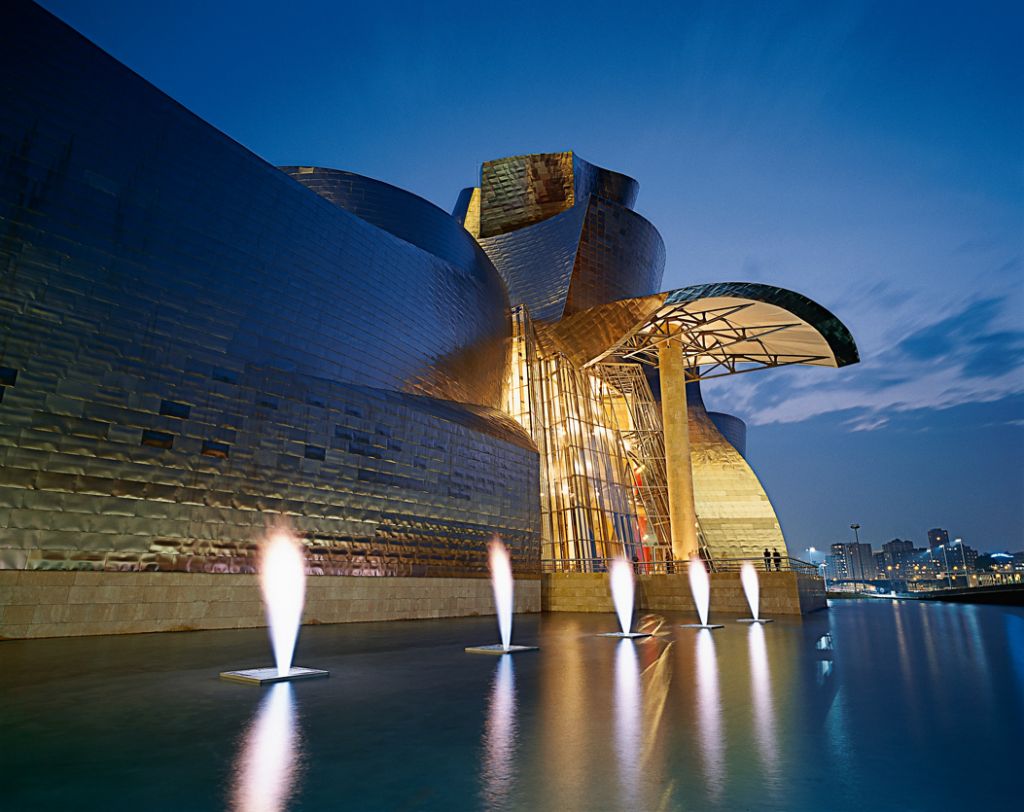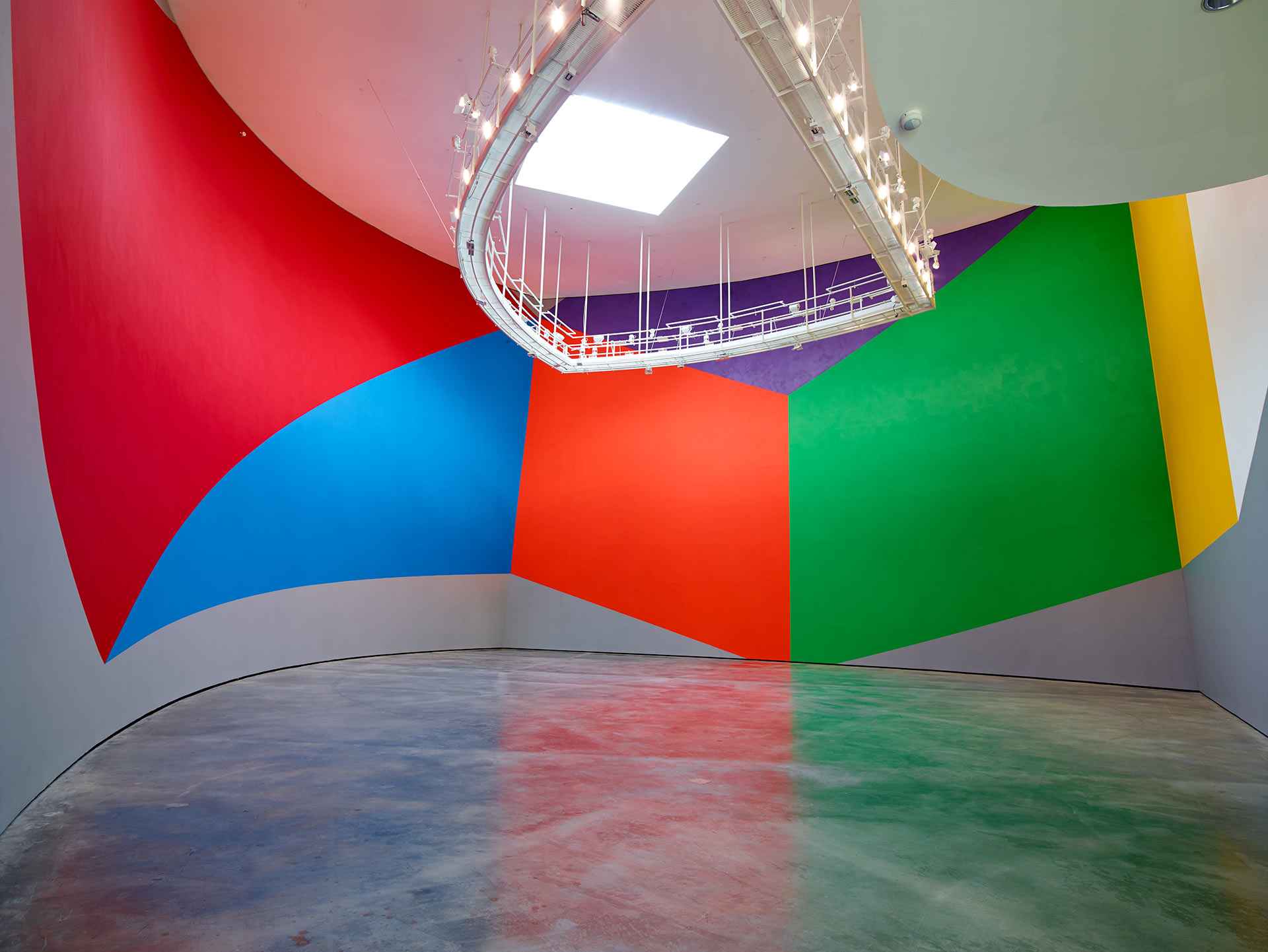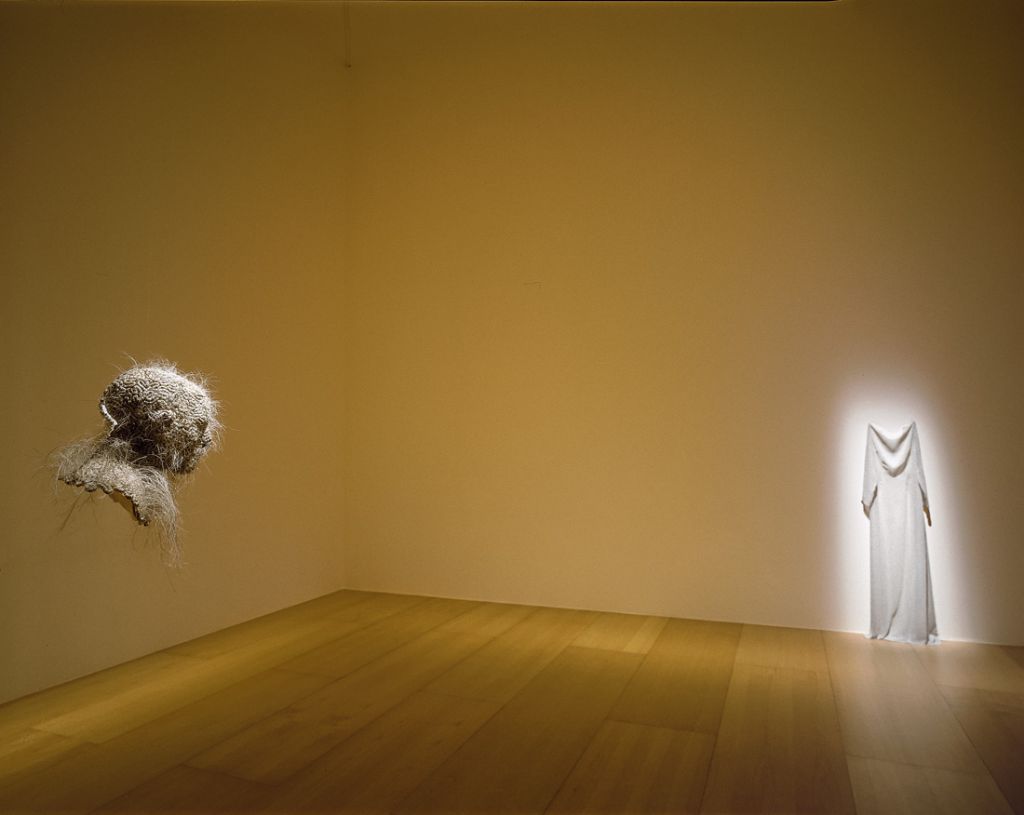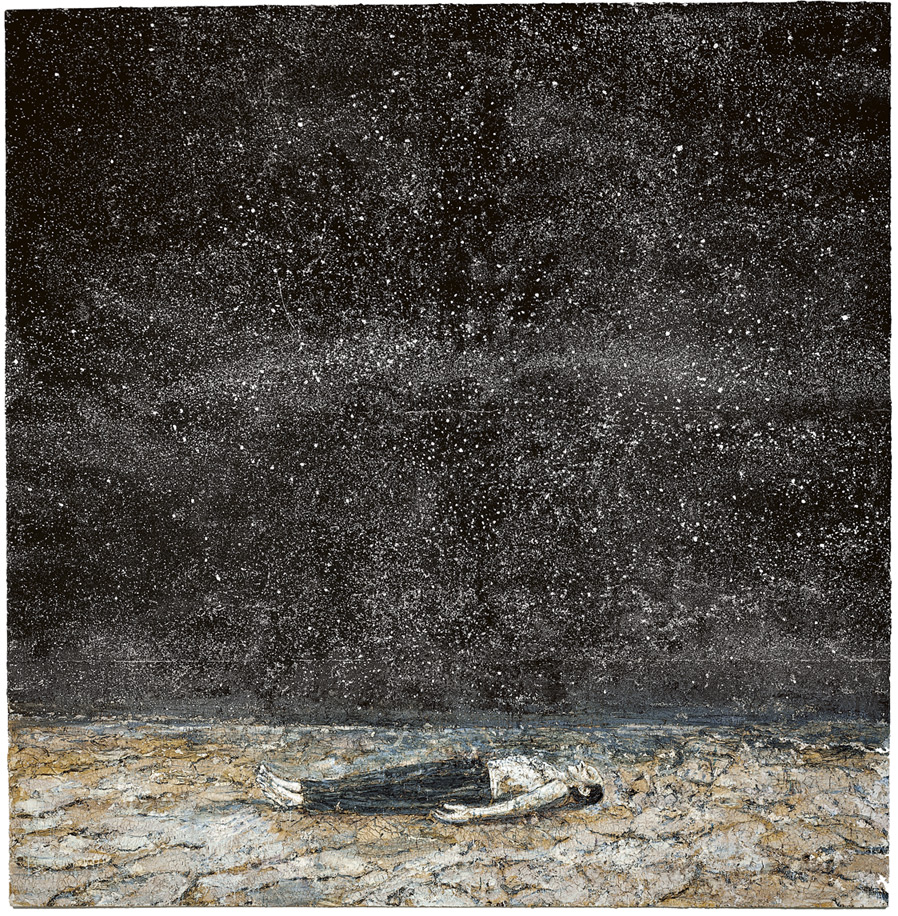Large Blue Anthropometry [ANT 105]
ca. 1960Dry pigment and synthetic resin on paper mounted on canvas287.8 x 430 x 4 cm
In his brief, seven-year artistic career—cut short by his premature death in 1962—Yves Klein created a heterogeneous and critically complex body of work that anticipated much of the art of the succeeding decades, from Conceptual art to performance art. Although Klein began by creating monochrome canvases in the mid-1950s, he abandoned the specificity of the pictorial in favor of a conception of art as independent of any particular medium or technique. A postmodern artist ahead of his time, Klein conceived of art that was invisible, composed the Monotone Silence Symphony (Symphonie Monoton Silence), imagined an "air architecture," presented his actions in public, turned to photography, and commissioned "documentation" recording his more ephemeral works. His program focused less on the particular skill of the artist and more on the artist's ability to put forth a mythic presence generating works in every genre: "A painter has to create only one masterpiece—himself, constantly—and to become a kind of atomic battery, a kind of generator of constant radiation that impregnates the atmosphere with all of his pictorial presence, which remains fixed in space after he passes through it."[1]
Anxious to break with all forms of expressionism, Klein had, practically from the outset of his career, "rejected the brush," which he felt was "too psychological," in favor of rollers, which were more "anonymous" and enabled him to "create a ‘distance' between [himself] and [his] canvases.[2] Between 1958 and 1960 he perfected a technique that allowed him to expand on this idea: he used nude models as "living brushes" (pinceaux vivants) that created marks and impressions under his supervision. The Anthropometries, as they would be branded by Klein's friend, the critic Pierre Restany, maintained Klein's insistent separation between the work and his own body, and also allowed him to revive the nude without resorting to traditional means of representation. Klein presented a demonstration of the technique at the Galerie Internationale d'Art Contemporain in Paris on March 9, 1960, attended by approximately one hundred guests. As musicians played Klein's Monotone Silence Symphony, the tuxedo-clad artist directed the actions of three nude models, who spread paint on their torsos and thighs and pressed or dragged their bodies on sheets of white paper. In addition to one "corporeal monochrome," the resulting paintings comprised both simple static impressions and dynamic traces of bodies in motion.
Large Blue Anthropometry [ANT 105] (La grande Anthropométrie bleue [ANT 105], ca. 1960) is one of a group of four works that represent the apotheosis of Klein's "living brush" technique. Klein called these works his Battles (Batailles), a term that evokes the art-historical genre of history painting—an association further suggested by the large scale of the works. As Nan Rosenthal has observed, Klein's Anthropometries are both iconic and indexical, in the sense that they "appear both to illustrate a subject and to show its literal traces."[3] Nevertheless, some of the resulting traces are more abstract than others; in Large Blue Anthropometry [ANT 105], the specific corporeal forms of the figures have become largely illegible, and their movements across the paper register more as explosive bursts, splatters, and smears of paint, as though to parody European Art Informel or American Abstract Expressionist painting.
1. Yves Klein, "Quelques extraits de mon journal en 1957," in Klein, Le dépassement de la problématique de l'art (La Louvière, Belgium: Éditions Montbliart, 1959), pp. 43–44.
2. Yves Klein, "Truth Becomes Reality," trans. Howard Beckman, in Yves Klein, 1928-1962: A Retrospective, exh. cat. (Houston: Institute for the Arts, Rice University, 1982), pp. 229-32. Originally published as "Le vrai devient réalité," Zero (Düsseldorf) 3 (July 1961), p. 86.
3. Nan Rosenthal, "Assisted Levitation: The Art of Yves Klein," in Yves Klein, 1928-1962, p. 122.
Sources:
Denys Riout. "Yves Klein." In Guggenheim Museum Bilbao Collection. Bilbao: Guggenheim Museum Bilbao; Madrid: TF Editores, 2009.
Nancy Spector. "Yves Klein." In Spector, ed. Guggenheim Museum Collection: A to Z. 3rd rev. ed. New York: Guggenheim Museum, 2009.
Original title
La grande Anthropométrie bleue (ANT 105)
Date
ca. 1960
Medium/Materials
Dry pigment and synthetic resin on paper mounted on canvas
Dimensions
287.8 x 430 x 4 cm
Credit line
Guggenheim Bilbao Museoa
Resources
Perspectives
Large Blue Anthropometry (ANT 105), by Yves Klein
Moved by Yves Klein’s Large Blue Anthropometry (ANT 105) [La grande Anthropométrie bleue (ANT 105), ca. 1960], dancer and choreographer Israel Galván dances in front of the painting, one of the masterpieces in the Museum’s Collection. Then, with curator Geaninne Gutiérrez-Guimarães, they explore its power and musicality.






